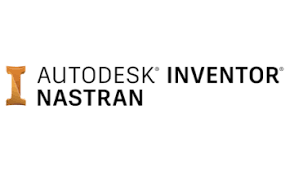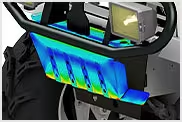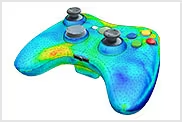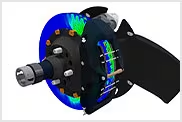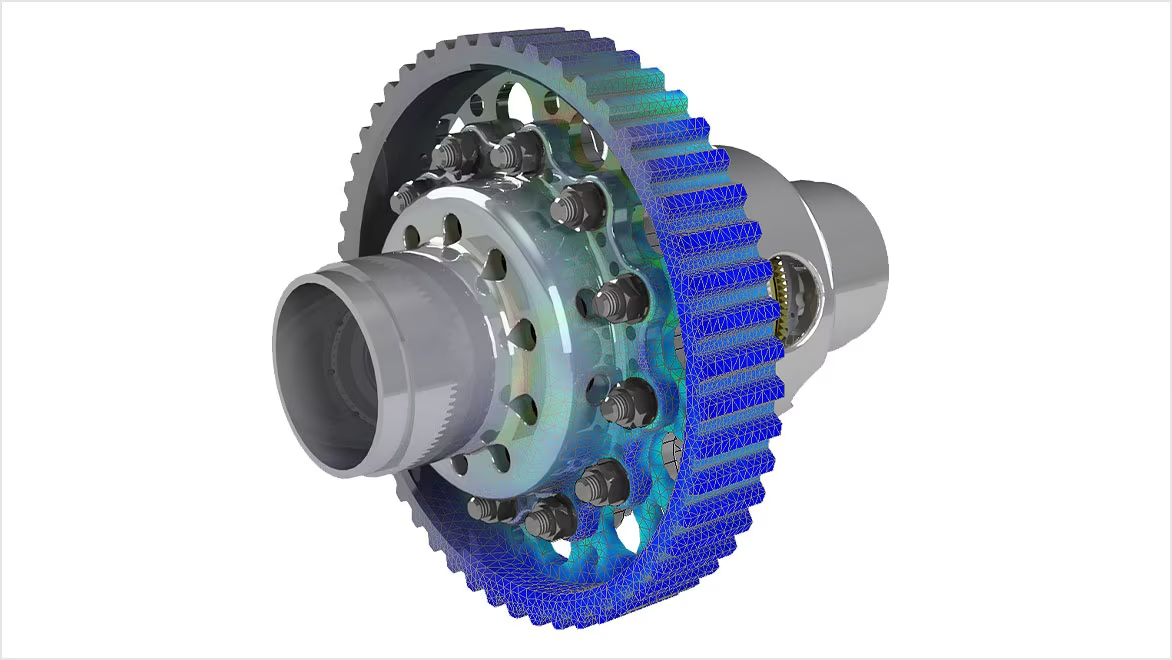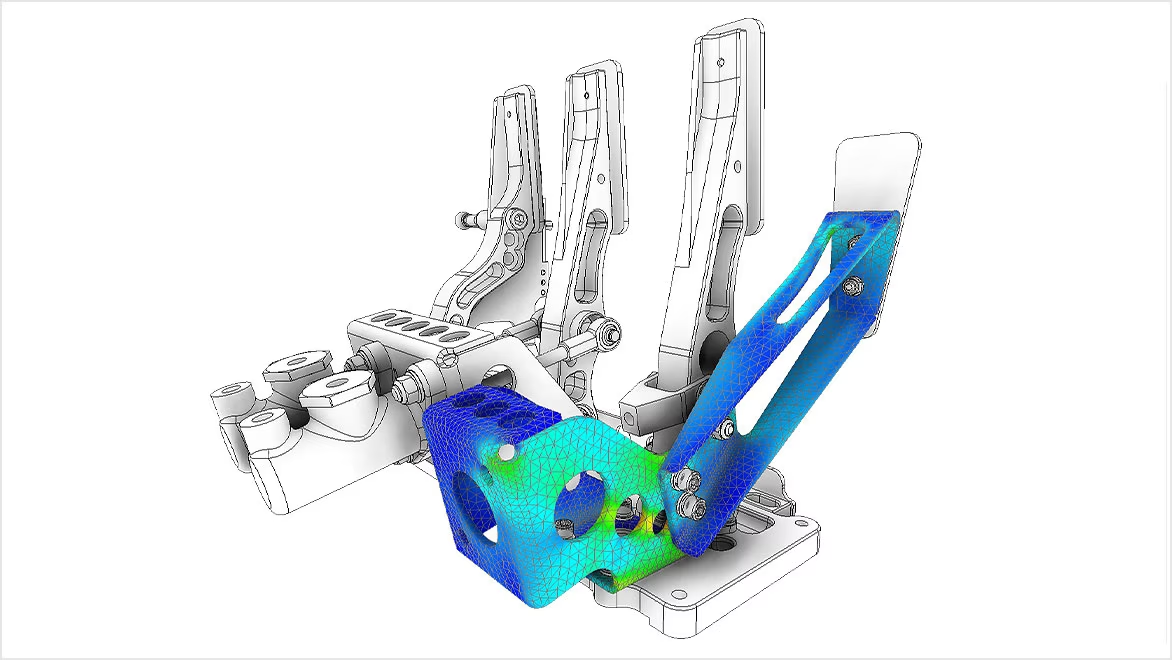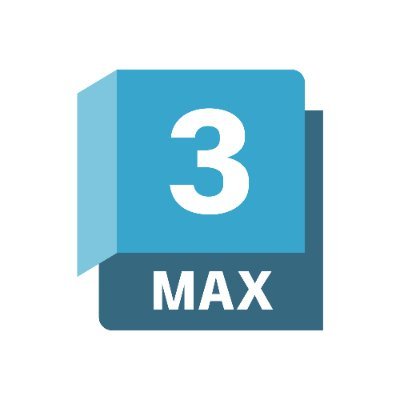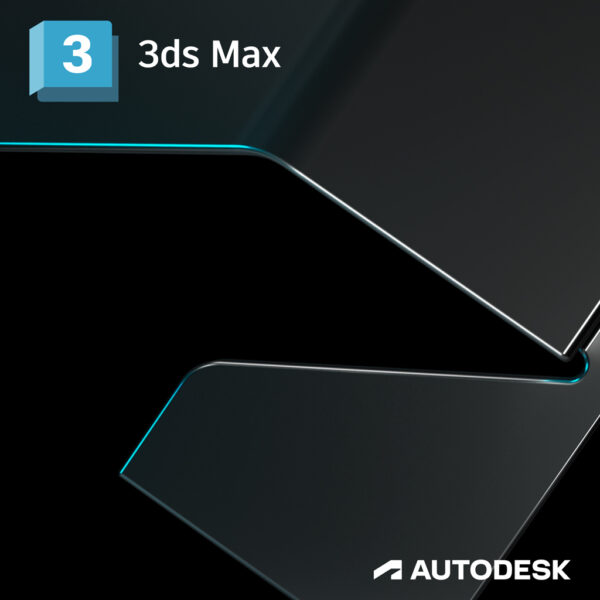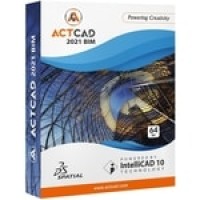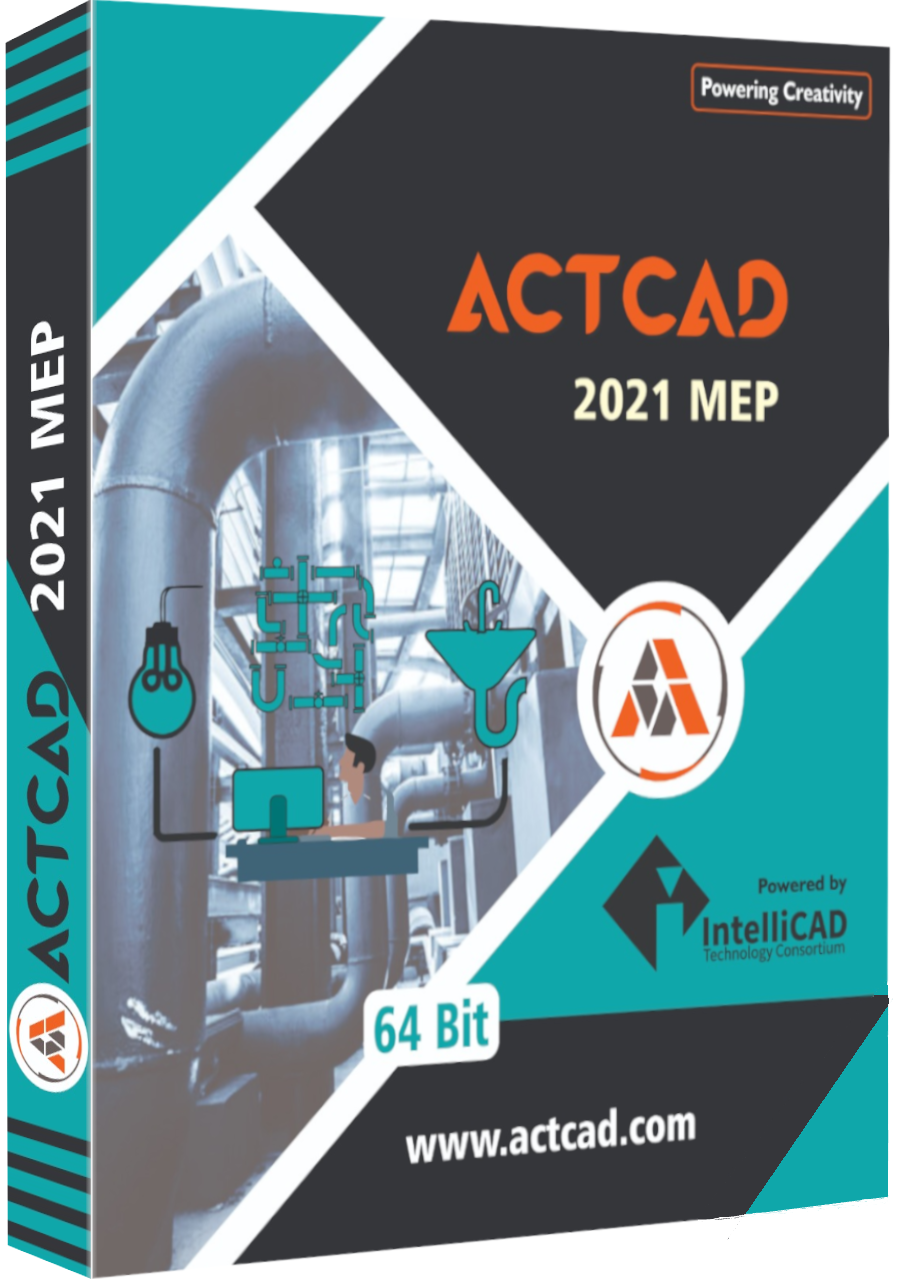Product Overview
What is Autodesk Inventor Nastran?
Autodesk Inventor Nastran® delivers finite element analysis (FEA) tools for engineers and analysts.
- Powered by the widely accepted Autodesk Nastran solver technology
- Wide range of simulation study types for nonlinear, dynamics, heat transfer, fatigue, and more
- Highly tested through a comprehensive verification program and documentation set using NAFEMS
Specifications
Improve product performance
Choose from a complete portfolio of powerful study types to help you optimize your design.
Reduce warranty issues
Go beyond linear static study types and analyze the effects of recurring loads in a fatigue study.
Decrease time to market
Analyze your designs early and often right inside Inventor to reduce the number of physical prototypes.
Heat transfer
Analyze the effects of convection, conduction, and radiation on your design to avoid failure due to excessive temperatures. Use those results to solve for an accurate thermal stress study.
Automated drop test
Use intuitive tools to set up the initial velocity and acceleration for an impact analysis.
Advanced material models
Gain highly accurate results by using advanced material models for plastic, rubber, soft tissue, and more in a nonlinear study type.
Linear static
Quickly solve linear static studies to learn where you have high concentrations of stress, strain, or displacement in your design.
Bolt connectors
Connect parts in your assemblies with bolt connections to reveal fastener concerns or ways to optimize and reduce the number of bolts needed.
Autodesk CFD interoperability
Import data from Autodesk CFD and include the temperature or pressure as a loading condition for highly accurate results in Inventor Nastran.
Response spectrum analysis
Run a quick analysis that includes number of modes, damping, and response spectrum data.
Automatic midplane mesher
Gain faster and more accurate bending results when using shell elements for thin components.
Frame Generator idealization
Solve for bending moment, bend diagrams, and axial stress when using beam elements for structural members.
Linear buckling
Analyze structures, such as columns and beams, for catastrophic failure under certain loading conditions.
Static fatigue
Determine the durability of structures under repeated loading, including low- and high-cycle fatigue.
Impact analysis
Solve impact events and drop testing of all types of nonlinearities at the same time.
Surface contact
Accurately simulate and model parts with different kinds of contact, such as sliding, friction, and welding.

